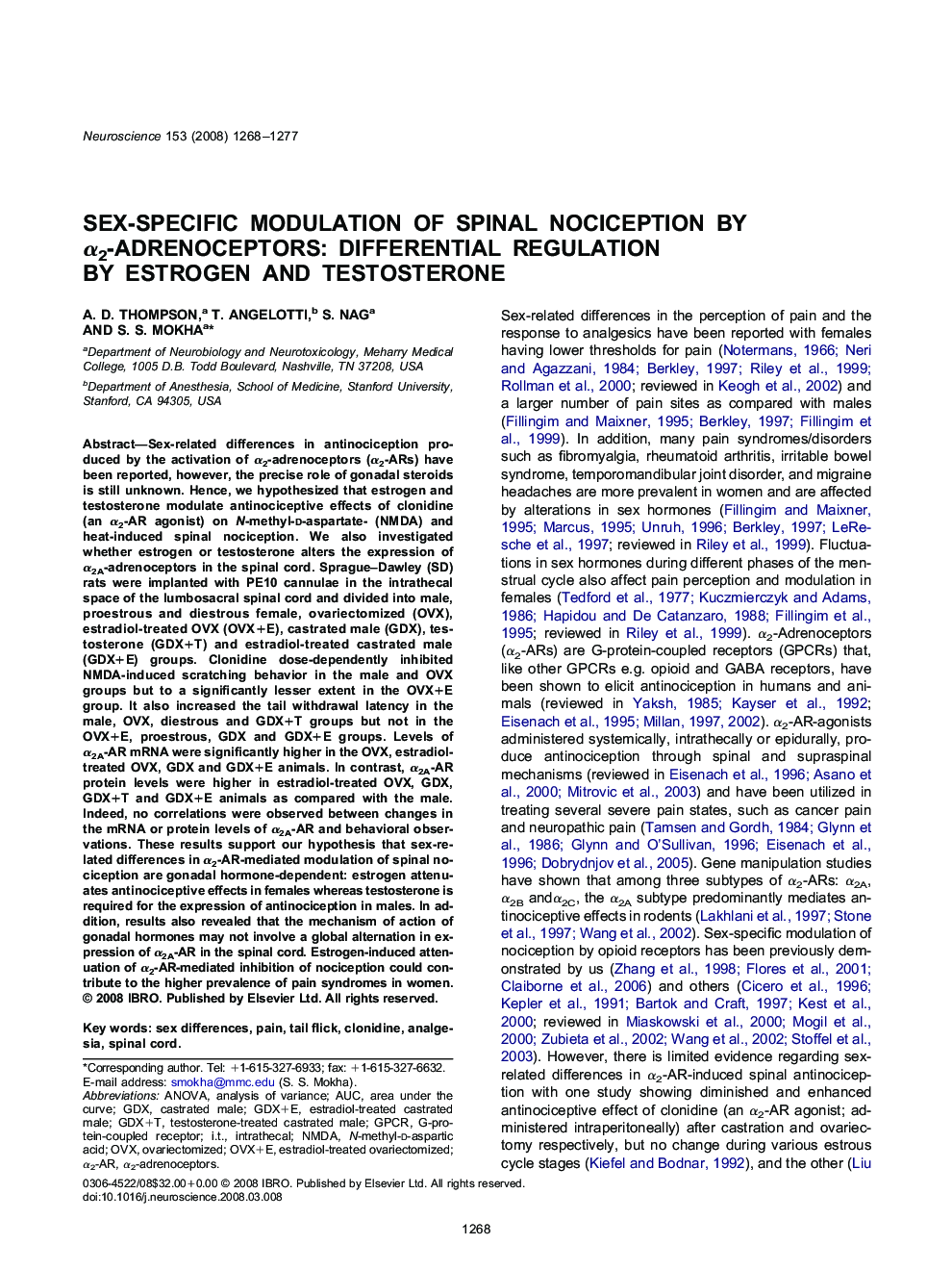| Article ID | Journal | Published Year | Pages | File Type |
|---|---|---|---|---|
| 4341796 | Neuroscience | 2008 | 10 Pages |
Sex-related differences in antinociception produced by the activation of α2-adrenoceptors (α2-ARs) have been reported, however, the precise role of gonadal steroids is still unknown. Hence, we hypothesized that estrogen and testosterone modulate antinociceptive effects of clonidine (an α2-AR agonist) on N-methyl-d-aspartate- (NMDA) and heat-induced spinal nociception. We also investigated whether estrogen or testosterone alters the expression of α2A-adrenoceptors in the spinal cord. Sprague–Dawley (SD) rats were implanted with PE10 cannulae in the intrathecal space of the lumbosacral spinal cord and divided into male, proestrous and diestrous female, ovariectomized (OVX), estradiol-treated OVX (OVX+E), castrated male (GDX), testosterone (GDX+T) and estradiol-treated castrated male (GDX+E) groups. Clonidine dose-dependently inhibited NMDA-induced scratching behavior in the male and OVX groups but to a significantly lesser extent in the OVX+E group. It also increased the tail withdrawal latency in the male, OVX, diestrous and GDX+T groups but not in the OVX+E, proestrous, GDX and GDX+E groups. Levels of α2A-AR mRNA were significantly higher in the OVX, estradiol-treated OVX, GDX and GDX+E animals. In contrast, α2A-AR protein levels were higher in estradiol-treated OVX, GDX, GDX+T and GDX+E animals as compared with the male. Indeed, no correlations were observed between changes in the mRNA or protein levels of α2A-AR and behavioral observations. These results support our hypothesis that sex-related differences in α2-AR-mediated modulation of spinal nociception are gonadal hormone-dependent: estrogen attenuates antinociceptive effects in females whereas testosterone is required for the expression of antinociception in males. In addition, results also revealed that the mechanism of action of gonadal hormones may not involve a global alternation in expression of α2A-AR in the spinal cord. Estrogen-induced attenuation of α2-AR-mediated inhibition of nociception could contribute to the higher prevalence of pain syndromes in women.
